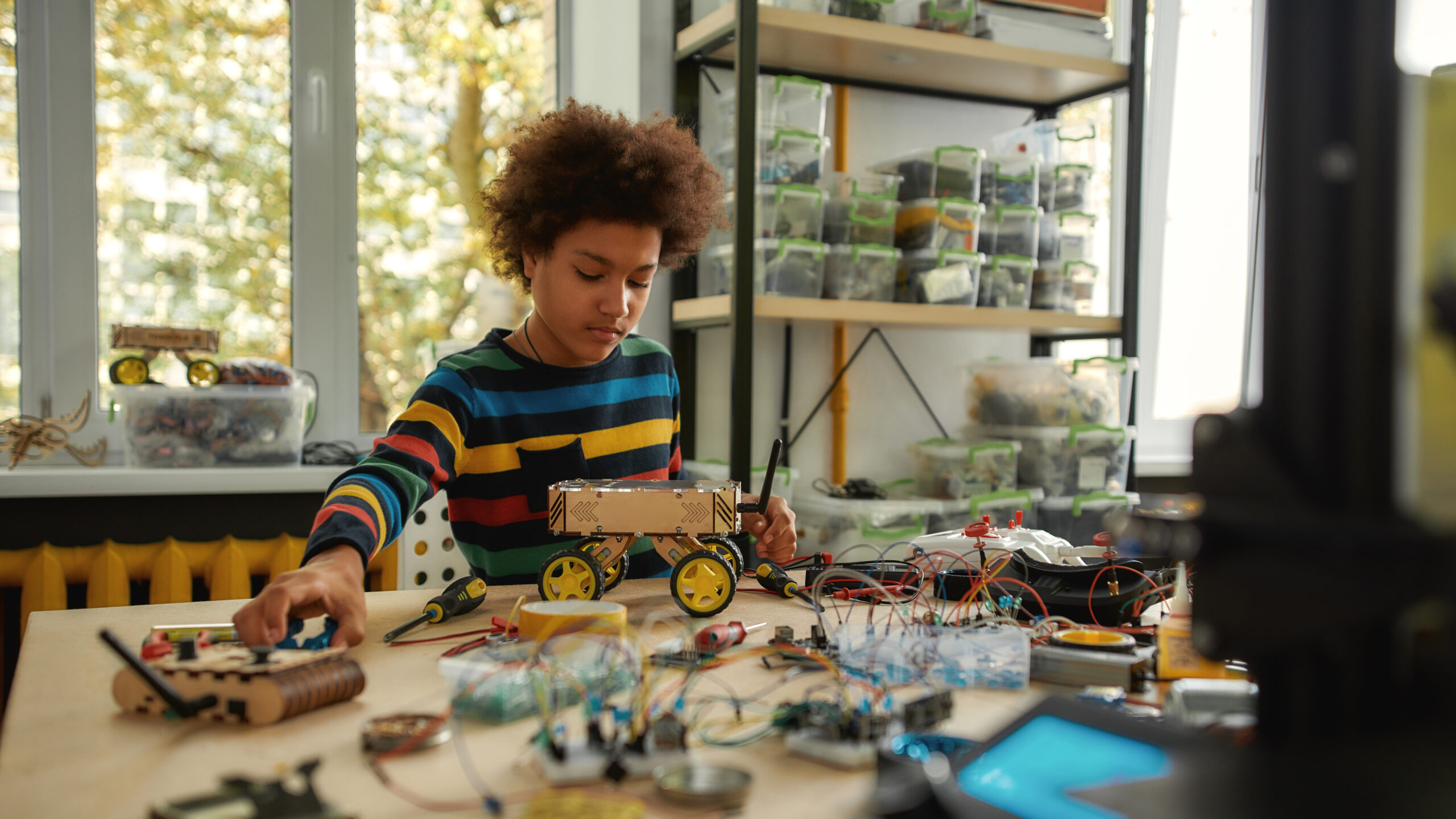Ages and Stages for Teaching Science
From Blair Lee, M.S.
In her book, Your Child’s Growing Mind: A Guide to Learning and Brain Development from Birth to Adolescence, Jane M. Healy states that understanding a child’s brain and the way it develops is the key to understanding how they learn. While Healy does not specifically discuss the ages and stages for teaching science, she does discuss the current scientific theory on nervous system development and relates that to the ages and stages of learning for young people. Each child is different. They access and process information differently, and they learn using different strategies. There is, however, some broad understanding of brain development that can, as Healy states, be a guide for what to expect at certain ages and stages.
In Ages and Stages for Teaching Science, I will cover the ages and stages for science learning. This article developed from a talk I gave at the SEA Online Conference in August 2022. We received numerous requests from attendees that I write an article based on this specific information, which is only part of a more general-learning science talk. If your child does not fit into the classic ages and stages, remember this is a broad discussion, and there might be overlaps or outliers at every age and stage.
Ages and Stages for Teaching Science at the Elementary Level
Get kids excited about learning science.
Learning how the natural and physical world works is fascinating for students at this age. Channel their enthusiasm and choose relevant topics and information that fascinates them. At this age, confidence is key. If a child has a learning challenge involving writing, reading, or fine motor skills, pull those out of science work. Focus on the important information that kids need to learn so that they can begin understanding how the natural and physical world works. If you give them feedback about their science work, make it positive. Focus on the things they have learned and have come to fully understand.
If your child moves beyond a science level and wants to do more and engage more fully with what they just learned, go for it. This type of engagement is where a love of learning comes from, and if you want your child to be a lifelong learner, the first step is helping them to love learning.
Sometimes, parents get nervous about homeschooling science, even at the elementary level, because they feel they are not “good” at science. You will want to work on these nerves if this sounds like you. Your children can sense that you’re nervous about teaching something, and it can negatively affect the way they approach and feel about learning the subject matter. If you’re nervous about. teaching science for this reason, find good resources to help you teach and learn right along with your kids.

Focus on the foundational fundamentals
In the later years, there will be a shift to focus on the processes, procedures, and practices used by scientists. Be wary of using science materials that rely primarily on processes over facts. To critically evaluate science topics and find materials that apply to processes, procedures, and practices. in a meaningful way, learners need to understand the facts that are the foundational fundamentals explaining science. To understand what is really happening in the natural and physical world, learners need to be able to put together the pieces of the puzzle that define science systems.
A focus on the foundational fundamentals will include facts, memorization, and knowledge gathering. Scaffold the knowledge students are acquiring in a way that helps them put together the pieces of what they’re learning . It is important to include some work involving the processes, procedures, and practices of science. This should be done with explicit explanations, walking learners through what they should be doing for each step. It is essential you use evidence-based science materials so that your student learns the basic facts of science.
Engage the hands and the head
This is not to say that there isn’t a hands-on component: science at every age and stage should focus on the “doing” of science. Coming to understand the natural and physical world requires active thought that incorporates kinesthetic work as learners think through science information coupled with observations. Young learners will enjoy science more if they’re up and moving around while they engage with the material. They will also learn at a higher level, as they come to master what they’re working on through different learning processes and pathways.
Check out this article Vetting Secular Science Curriculum for help ensuring your are choosing evidence-based science materials with your children.
Ages and Stages for Teaching Science at the Middle School Level
Get students ready for high school science.
Critical thinking and executive functioning skills are an important part of success. For high school science, and honestly all academic endeavors, the time to begin working on these skills is in middle school. If you begin working on skills such as notetaking, identifying ideas a hypothesis is based on, understanding the difference between inference and direct observation, and others, by the time they get to high school, learners can apply these skills in a way that brings sound reasoning and logic to their studies.

Weaving science practices and procedures into the foundational fundamentals
In addition to building on foundational fundamentals, middle school is a great time to begin working on the practices and procedures that scientists use as they conduct science. It is critically important that learners come to understand the type of work that goes into developing scientific theories and arriving at science facts. It is likely that the basics for this were covered at the elementary level; however, it is at the middle school level that you should expect the teaching around this to be more explicit about the science work that is being done.
A good middle school science course should walk through the parts of the scientific method and offer examples of how it has been applied to real-world situations. Within this walkthrough, learners should be asked to report data and bring reasoning and logic into their discussions about labs and activities they conduct. This should be done within the context of a written lab report, based on lab work that students are doing. Look for course materials that use a scaffolded approach. In teaching the basics of this very formulaic type of nonfiction writing, middle school students should be taught about the specifics of what is being looked for in the hypothesis, data, results, and conclusion. This type of thoughtful teaching supports the teaching around how scientists arrive at scientific theories.
It is also important to work on learners’ metacognitive skills, in particular, the ability to retrieve, apply, and discuss retained knowledge. Ask questions, arriving at a hypothesis based on what academic material learners have already been exposed to. Help them learn to apply what might not seem on the face of it to be related to the things they are studying. It can be beneficial to students to be shown how to take a narrow view when looking at something, then open that up to a broader view, especially if you encourage them to retrieve and apply knowledge they’ve been exposed to previously. If you’re worried that you won’t be familiar with what they’ve learned, open a dialogue and have a discussion. Something as simple as you thinking about your thinking out loud can be a real benefit to young people as they come to understand, through modeling, the thinking process of someone who has had more academic experience than they have.
Evaluations
For middle school students, I recommend giving a first assignment to evaluate their knowledge. Look at where they are and scaffold them to grow from there. One of the most important things that you can do for middle school students is to help them internalize a growth mindset: a mindset where your learner comes to understand that it is the acquisition of information and knowledge that’s of primary importance, not the time it takes to learn it.
Ages and Stages for Teaching Science at the High School Level
Get students ready for college and work.
High school is the perfect time to work on the executive functioning, critical thinking, and metacognitive skills your learner will need once they graduate from high school. These skills are often critical for future success. So, why not teach them? Science is a great discipline to weave in many of these skills. High school science requires scheduling, the ability to read and disseminate texts, the ability to pull primary principles out of a large body of text, the ability to think critically and logically, and the ability to build on prior knowledge in a way that benefits what you’re working on.
High school students are ready to have big discussions about science. Teach them how to determine if a source is credible or not, and what to look for in a credible source, for example, peer reviewed articles. Make real-world connections outside of science to what they are learning in science. Many of the issues we are facing in the world today have their basis in science.

High school science skills
High school students are ready to think about the big picture and begin applying the science skills that they’ve been working on before high school. Look for high school students to apply reasoning and logic when reading and reporting science information. Ask students to make connections to what’s happening in science outside of their studies.
As a part of that, I feel we owe it to students to do them the courtesy of making sure they have an adequate education around important science topics such as climate change and microbiology. If something is important for negotiating the natural and physical world, including learners’ individual health, it is important that we teach the information they need, even if it’s an uncomfortable subject to cover.
Within their science studies, learners should use logical deduction based on prior knowledge when developing hypotheses. They should be able to pull data from tables and graphs to use in support of conclusions. Frankly, this is a skill that should be incorporated beyond just science studies. If the data comes from sources other than academic texts, discuss how information can be misconstrued, and why it’s important to use reliable sources for data. Students should be able to demonstrate an understanding of science practices and procedures in written form using a lab report. Lab reports should incorporate a logical progression, where conclusions relate directly to data.
Evaluations
I recommend using a mastery approach for evaluations with high school students. A mastery approach gives students the opportunity to go back and work on subjects when it is called to their attention that they haven’t achieved grade and stage level mastery. Let’s be honest, no one learns everything the first time they are exposed to it. A mastery approach to evaluations acknowledges this and uses a growth mindset. For high school students, a mastery approach also gives them the opportunity to earn the grade they want. Remember, high school students need grades for their transcripts in all core classes. A mastery approach gives students who are high achievers the opportunity to be in control of the grade they earn, especially if you create a situation and a system so that you can accurately determine if they take the time to go back and learn the material.
The ages and stages for teaching science is not just important for people who have been teaching science each year. If you haven’t been engaged in science all along, and you’re worried that you have not addressed some of these issues at an earlier age and stage, don’t worry about it. You can only start from where you are. There is no time like the present to get started. Many of the points made within the Ages and Stages for Teaching Science don’t just apply to science. In addition, no subject is an island. There are learning skills that make sense to teach in science that are important for students to be able to apply in all subjects.
New to Homeschooling? Check out our How to Homeschool 101 Article.
Check out our article, Ages and Stages of Writing Instruction.

